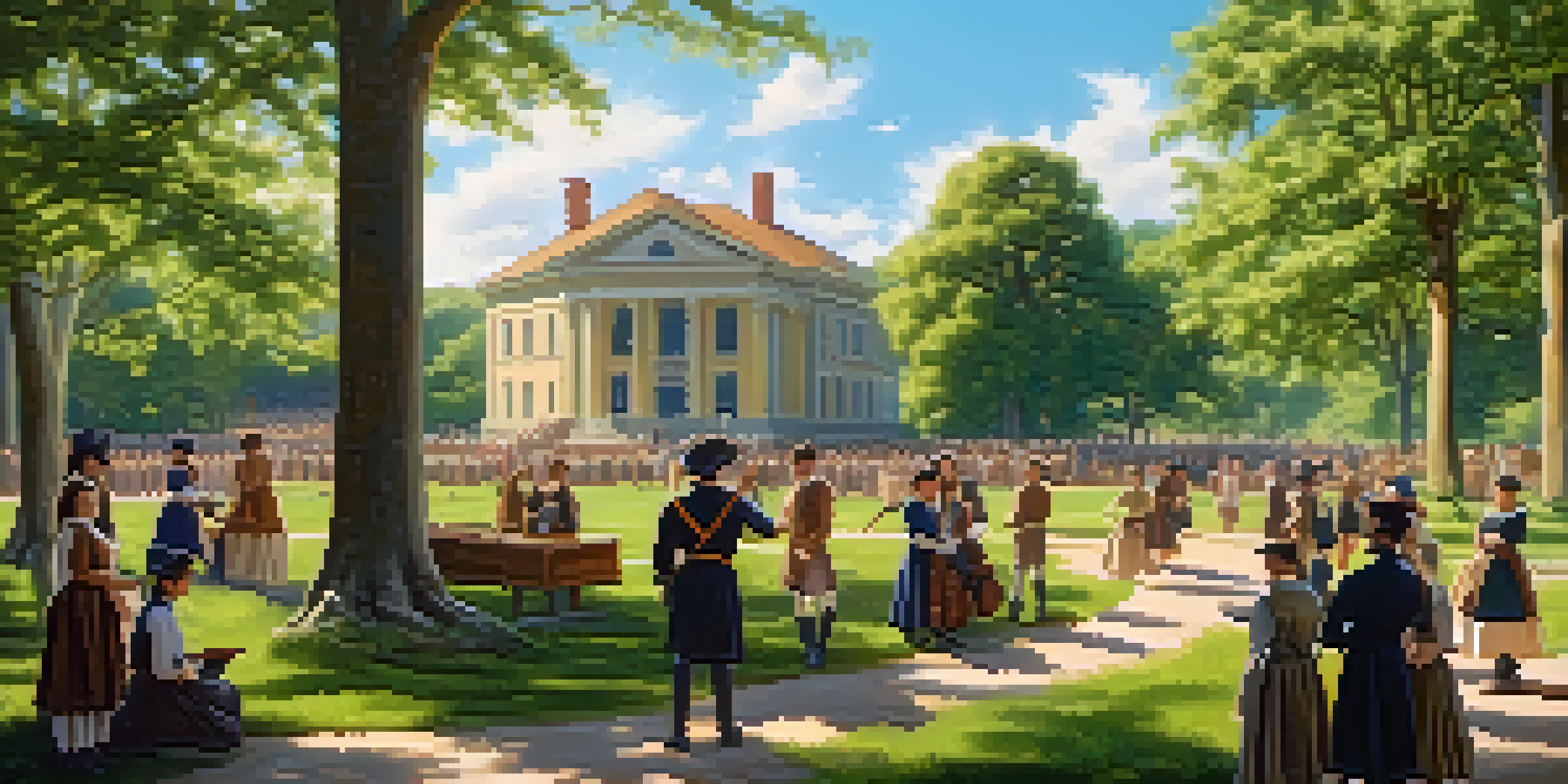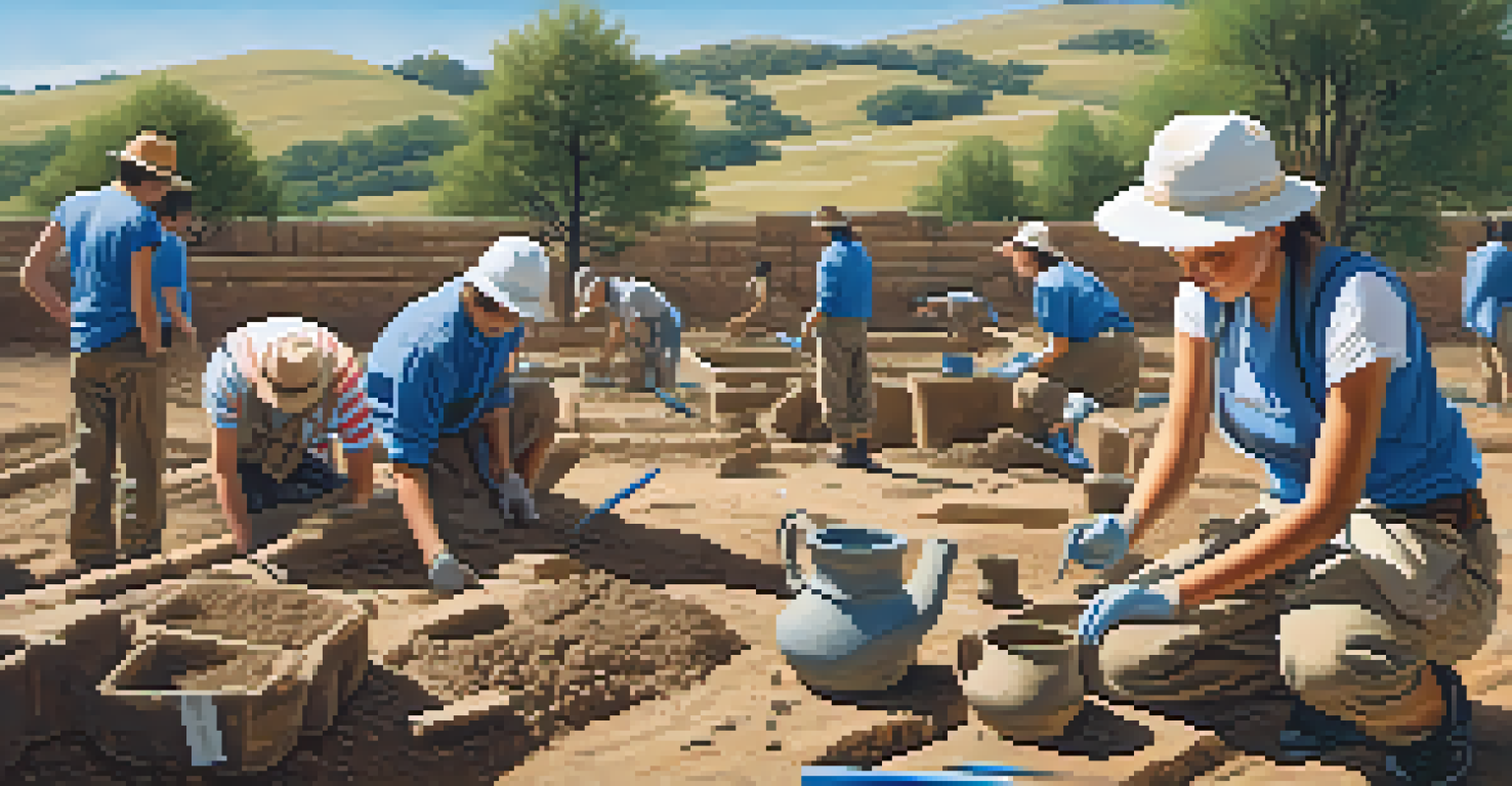Exploring History Through Outdoor Field Experiences

The Importance of Experiential Learning in History
Experiential learning is a powerful tool, especially in history education. It allows students to engage directly with the past, rather than just reading about it in textbooks. By immersing themselves in historical sites or reenactments, learners gain a deeper understanding of events and their significance.
Tell me and I forget. Teach me and I remember. Involve me and I learn.
For instance, visiting a battlefield or a historical landmark can evoke emotions and connections that a classroom setting simply cannot replicate. This hands-on approach helps students remember historical facts and figures more vividly. It also sparks curiosity, encouraging them to explore further.
Moreover, outdoor experiences foster critical thinking and analytical skills. Students must interpret what they see, question narratives, and form their own opinions about history. This active engagement makes history feel relevant and personal, bridging the gap between past and present.
The Role of Nature in Historical Contexts
Nature is often intertwined with history, serving as both a backdrop and a character in historical narratives. Outdoor field experiences offer a unique opportunity to explore how geography, climate, and natural resources influenced historical events. For example, the strategic significance of rivers in ancient civilizations showcases how landscapes shaped human actions.

When students walk through historical sites, they can better appreciate the challenges people faced in different environments. Understanding how weather patterns or terrain affected battles or settlements makes history more tangible. It’s like stepping into a time machine, where nature narrates its own stories.
Experiential Learning Enhances History
Experiential learning immerses students in history, fostering deeper understanding and emotional connections.
Furthermore, engaging with nature can enhance a student’s emotional connection to historical events. Walking through a forest where a significant battle took place or standing on the grounds of a historic treaty can evoke a sense of reverence and reflection. This connection to the environment enriches the learning experience.
Hands-On Activities that Bring History Alive
Outdoor field experiences often incorporate hands-on activities that allow students to interact with history in a meaningful way. Activities like archaeology digs, historical reenactments, or crafting traditional tools provide a tactile dimension to learning. This active participation deepens understanding and retention of historical concepts.
The more that you read, the more things you will know. The more that you learn, the more places you’ll go.
For example, students might engage in a mock archaeological dig, discovering artifacts that tell the story of a civilization. This not only teaches them about excavation techniques but also about the importance of preserving history. It’s an exciting way to learn that makes history feel like a living subject.
Additionally, these hands-on experiences can foster teamwork and communication skills. Working together to solve historical puzzles or complete challenges encourages collaboration and builds camaraderie among students. Such skills are invaluable in both educational settings and future workplaces.
The Benefits of Outdoor Learning for Students
Outdoor learning offers a multitude of benefits beyond just historical understanding. It promotes physical activity, encouraging students to be active while they learn. This is especially important in an age where sedentary lifestyles are becoming the norm.
Moreover, spending time outside can enhance mental well-being. Nature has been shown to reduce stress and increase focus, allowing students to engage more fully with the material. When students are physically and mentally refreshed, they are more likely to absorb information effectively.
Nature Shapes Historical Narratives
Outdoor experiences highlight how geography and nature influenced historical events, making them more tangible.
Additionally, outdoor field experiences can cater to different learning styles. Visual learners can take in the sights of historical sites, while kinesthetic learners thrive during hands-on activities. This inclusive approach ensures that all students can connect with history in their own way.
Connecting Classroom Learning with Real-World History
One of the greatest advantages of outdoor field experiences is their ability to connect classroom learning with real-world applications. When students learn about historical events in class and then visit the actual sites, the information becomes tangible. It reinforces their learning and shows them the relevance of history in today’s world.
For example, after studying the Civil Rights Movement, students might visit key locations in their community where significant events took place. This not only deepens their understanding but also encourages them to reflect on the ongoing impact of history on contemporary society. Such connections can inspire civic engagement and activism.
Furthermore, these experiences can spark discussions about historical interpretations and their implications. When students see how history is preserved and presented in different contexts, they learn to appreciate diverse perspectives. This critical thinking fosters a more comprehensive understanding of history as a dynamic narrative.
The Impact of Technology on Outdoor Field Experiences
Technology has revolutionized outdoor field experiences, making them more interactive and accessible. With tools like augmented reality (AR) and virtual reality (VR), students can explore historical sites in innovative ways. For instance, AR apps can overlay historical images onto current landscapes, allowing students to visualize what life was like in the past.
Moreover, technology can enhance research and exploration. Students can use mobile devices to access information about the sites they visit, bringing context to their experiences. This real-time access to knowledge can make learning feel more immediate and relevant.
Technology Enhances Learning Experiences
Integrating technology into outdoor field experiences makes history more interactive and accessible for students.
However, it’s essential to strike a balance. While technology can enhance outdoor learning, it shouldn’t detract from the experience of being present in nature. Encouraging students to engage with their surroundings without distraction fosters a deeper connection to history and the environment.
Encouraging Lifelong Learning Through Field Experiences
Outdoor field experiences can ignite a passion for history that lasts a lifetime. By engaging students in dynamic learning environments, they are more likely to develop a curiosity and appreciation for the past. This love for history can extend beyond the classroom, encouraging independent exploration and study.
For example, students who have participated in immersive historical experiences might seek out books, documentaries, or even travel opportunities to learn more. This initiative fosters a habit of lifelong learning, where history becomes a continuous journey rather than a subject confined to school.

Additionally, these experiences can help students understand their role in shaping history. By connecting with their heritage or local history, they can feel empowered to contribute to their communities. This sense of belonging and responsibility is crucial in cultivating informed and engaged citizens.